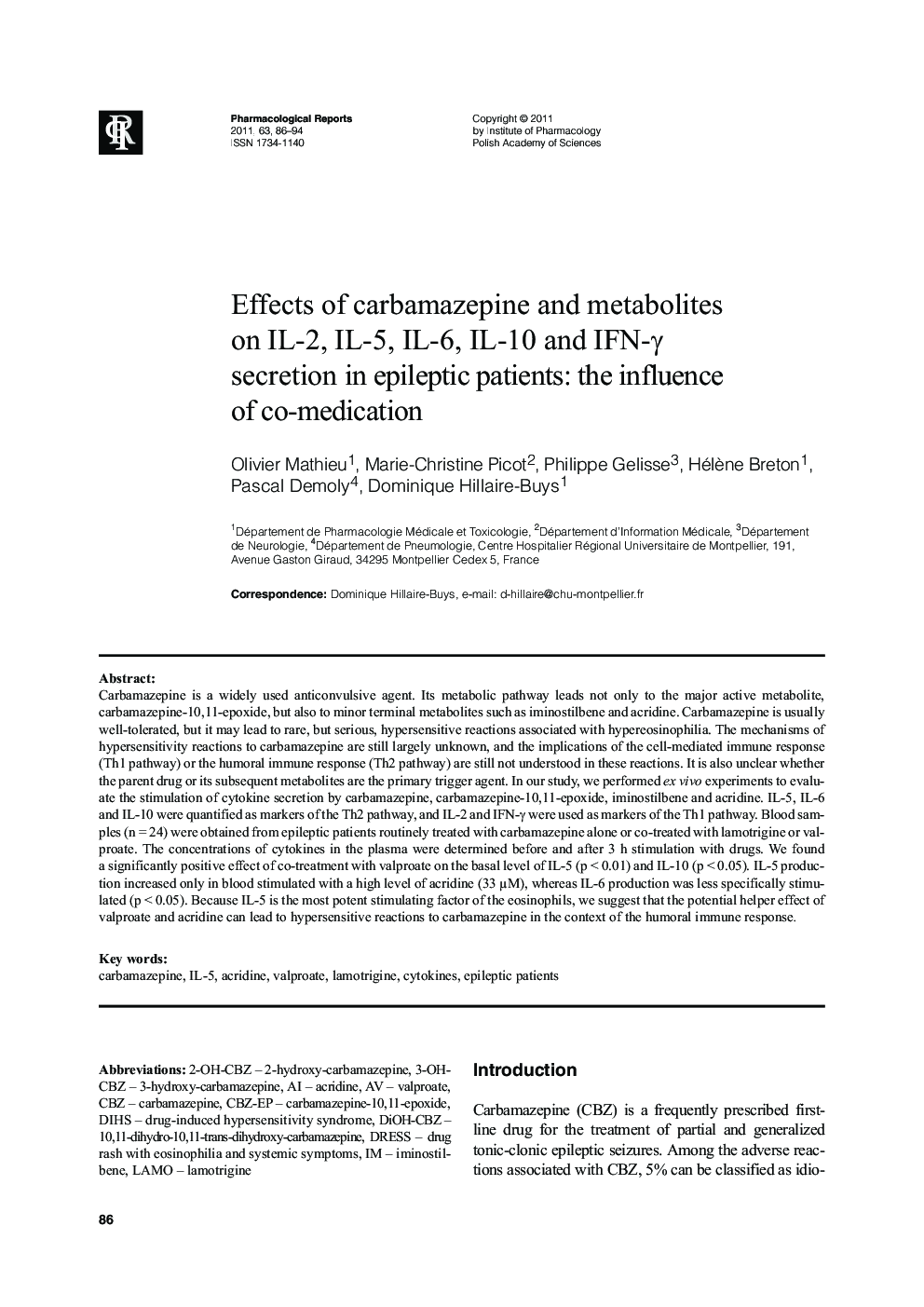| Article ID | Journal | Published Year | Pages | File Type |
|---|---|---|---|---|
| 2011055 | Pharmacological Reports | 2011 | 9 Pages |
Carbamazepine is a widely used anticonvulsive agent. Its metabolic pathway leads not only to the major active metabolite, carbamazepine-10,11-epoxide, but also to minor terminal metabolites such as iminostilbene and acridine. Carbamazepine is usually well-tolerated, but it may lead to rare, but serious, hypersensitive reactions associated with hypereosinophilia. The mechanisms of hypersensitivity reactions to carbamazepine are still largely unknown, and the implications of the cell-mediated immune response (Th1 pathway) or the humoral immune response (Th2 pathway) are still not understood in these reactions. It is also unclear whether the parent drug or its subsequent metabolites are the primary trigger agent. In our study, we performed ex vivo experiments to evaluate the stimulation of cytokine secretion by carbamazepine, carbamazepine-10,11-epoxide, iminostilbene and acridine. IL-5, IL-6 and IL-10 were quantified as markers of the Th2 pathway, and IL-2 and IFN-γ were used as markers of the Th1 pathway. Blood samples (n = 24) were obtained from epileptic patients routinely treated with carbamazepine alone or co-treated with lamotrigine or valproate. The concentrations of cytokines in the plasma were determined before and after 3 h stimulation with drugs. We found a significantly positive effect of co-treatment with valproate on the basal level of IL-5 (p < 0.01) and IL-10 (p < 0.05). IL-5 production increased only in blood stimulated with a high level of acridine (33 µM), whereas IL-6 production was less specifically stimulated (p < 0.05). Because IL-5 is the most potent stimulating factor of the eosinophils, we suggest that the potential helper effect of valproate and acridine can lead to hypersensitive reactions to carbamazepine in the context of the humoral immune response.
